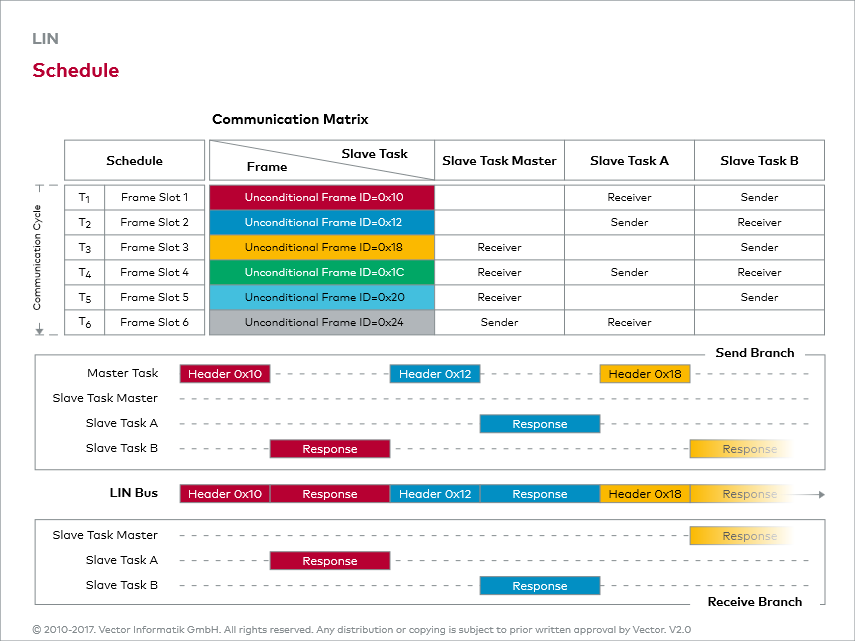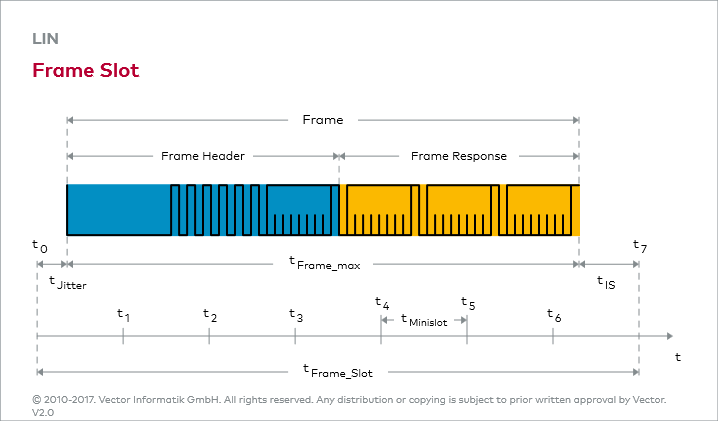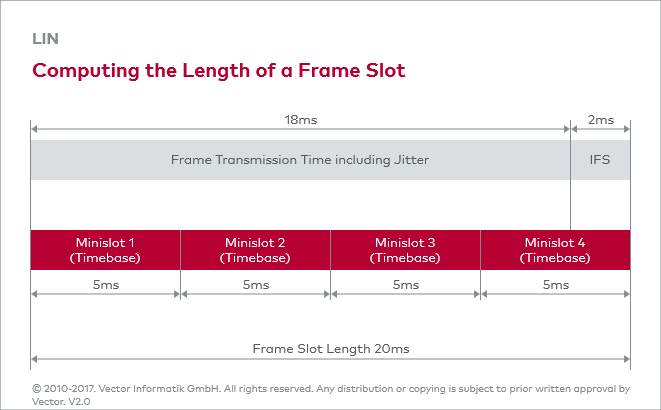Scheduling
Send Scheme
The master controls all communication in a cluster. Therefore, this node has an established sending scheme that is planned by the system designer and is described in the LDF. This makes communication in the network predictable, because there is a fixed time sequence (see figure: Schedule).
Slots and Minislots
A Schedule is organized into Slots, which are provided for transmission of one frame each. The size of the slots is defined by so-called minislots. A minislot is the cycle with which the Master Task processes the schedule. The duration of the minislots forms the time base for the ongoing communication.
Jitter
In computing the size of a slot, a jitter value is added. This is the potential time difference between the nominal beginning of a slot and the actually starting point. If a frame does not completely fill out the slot, the rest of the time period must be waited until the next slot is available. This time period is known as the IFS (see figure: Computing the Length of a Frame Slot).
Time Reserve
If the system designer correctly computes the time conditions for all frames, then no collisions can occur while the communication is operating. Each slot must be large enough to guarantee transmission of the related frame (see interactive figure: Computing the Length of a Frame Slot). Because economical and less powerful processors are often used, the nodes get a time reserve of up to 40% for message transmission.




